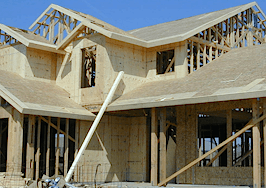NEW YORK — The next generation of homebuyers will continue to grapple with sky-high housing prices unless federal officials intercede with new tax policy to spur future residential development, Redfin’s chief economist said Tuesday during CEO Connect, a special morning of programming at the Inman Connect New York conference today.
Pointing to historically low housing inventory, Redfin Chief Economist Nela Richardson on Tuesday said the Trump Administration’s “Tax Cuts and Jobs Act,” which passed into law in December, failed to create incentives for developers to build both affordable and luxury housing. Despite growing wages and considerable demand, rising housing prices continue to stymie millennials and other first-time homebuyers.
“I think the miss on tax reform is that it didn’t include a provision that would spur residential housing construction, and that’s what the economy needs,” said Richardson during a CEO Connect session called “A New Year, A New Start? What’s Important, What’s Not?” Tuesday morning at Carnegie Hall. “We haven’t been all that innovative in housing policy for quite a while.”
Richardson lamented the historically low inventory that has plagued the housing market. Currently the monthly average stands at 1.2 million housing starts, significantly lower than the 1.5 million average over the past decade. “We’re underperforming,” she said.
Driven by a drop in single-family construction, U.S. housing starts plunged in December, marking the biggest decline in new residential construction in a little over a year, according to U.S. Census Bureau statistics released Thursday.
In a reversal from November, when the construction industry tallied a 10-year high with a revised seasonally adjusted rate of 948,000 new single-family units, the single-family rate for December dropped 11.8 percent, to 836,000, according to newly revised Census Bureau numbers.
Overall, U.S. housing starts in December fell 8.2 percent, to 1.19 million units, a far cry from November, when the construction industry broke ground on 1.3. million units. New construction fell 6 percent below the December 2016 rate of 1.27 million, according to the Census Bureau.
Meanwhile, the existing turnover rate has fallen, as families stay in their homes longer. “People aren’t moving as much,” said Richardson. “They’re staying in their homes longer.”
“I think there’s a lot of good in this economy, a lot of strength in terms of the sizzle,” said Richardson. “We’ve seen some income growth. But there’s still some steak that’s missing. Lots of sizzle, not a lot of steak.”
Can’t get enough Connect? Check out more coverage:












